RSPB Medmerry 12.05.21: A Cattle Egret, a Yellowhammer and a Cuckoo
- Sim Elliott

- May 13, 2021
- 5 min read
On Wednesday 12.05.21 I returned to the Manhood Peninsula and visited the RSPB Pagham Harbour Nature Reserves' neighbouring reserve, RSPB Medmerry
Medmerry is ... The result of one of Europe's largest managed realignment schemes, [where the coast, the Medmerry seawall was moved inland, allowing the former land to become salt marsh, pools and reed banks] Medmerry is just a stone's throw from neighbouring Pagham Harbour and linked by public footpaths Medmerry Nature Reserve, West Sussex - The RSPB
Completed in November 2013, the Medmerry Managed Realignment Scheme, at Selsey in West Sussex, includes the largest realignment of open coast in the UK. ‘Managed realignment’ involves building new defences inland from the coast and allowing a new intertidal area to form seaward of the new defences. ‘Intertidal’ refers to the land that is exposed at low tide and covered by the sea at high tide. The scheme, carried out on behalf of the Environment Agency, is a key element in a 15-year project to provide 7km of new sea defences to protect local communities in West Sussex, while at the same time creating a large nature reserve. Medmerry, which is located between Selsey and Bracklesham in West Sussex, is one of the stretches of coastline most at risk of flooding in southern England. Medmerry Managed Realignment Scheme | Team Van Oord
This was a really special day, as it was the first time since the beginning of the covid-19 pandemic that a had had a day out birding by public transport with a friend. My friend Colin is a much more expert amateur ornithologist than me; and he helped me learn how to identify species; and taught many really useful birding skills.
It was a day when I sae three new species to me to add to my life list list of birds; one of which, the Cattle Egret, is extremely rare.
These photographs are presented in chronological order. We arrived the site at 12.30 and left at 16.30. We only saw part of the reserve; which is good, as there may be more surprises
to come.
N.B. in my blog posts when I see a new-to-me bird I write more detailed information about it. Where there is little more than the bird's name it is because I have written about this bird in more depth in a previous blog post.

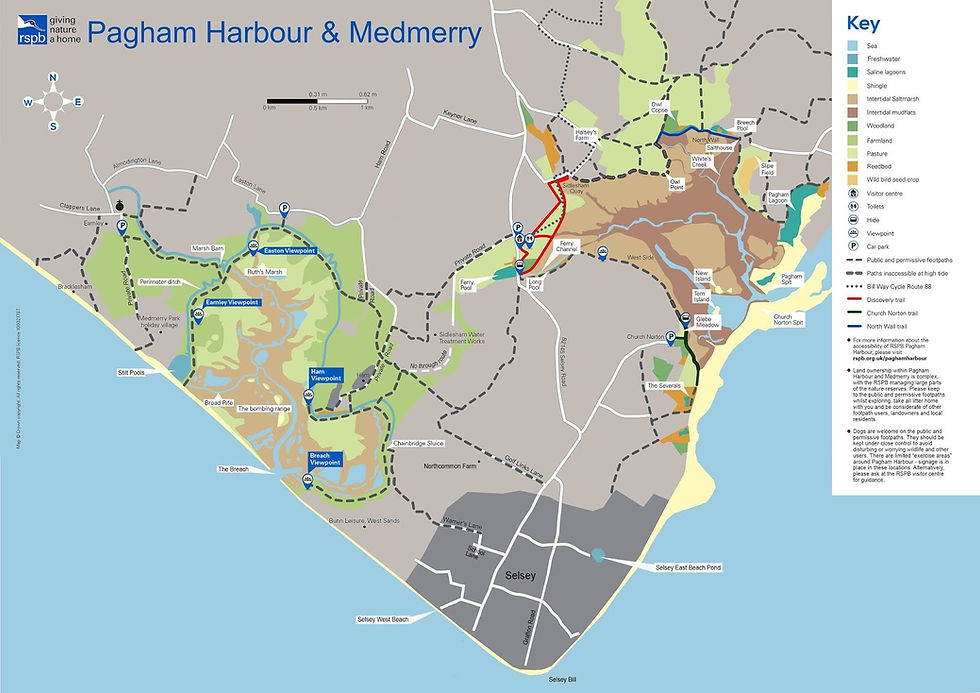
Photos from the Ferry Pool (RSPB Pagham Harbour) before walking into RSPB Medmerry
Black-tailed Godwit. Limosa limosa
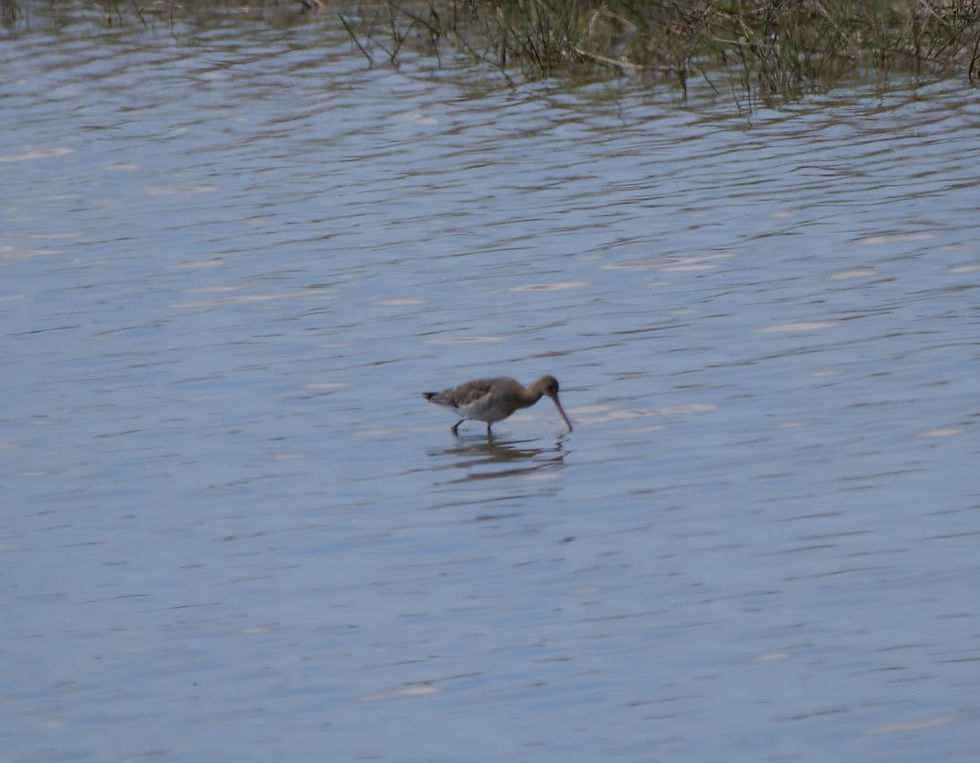

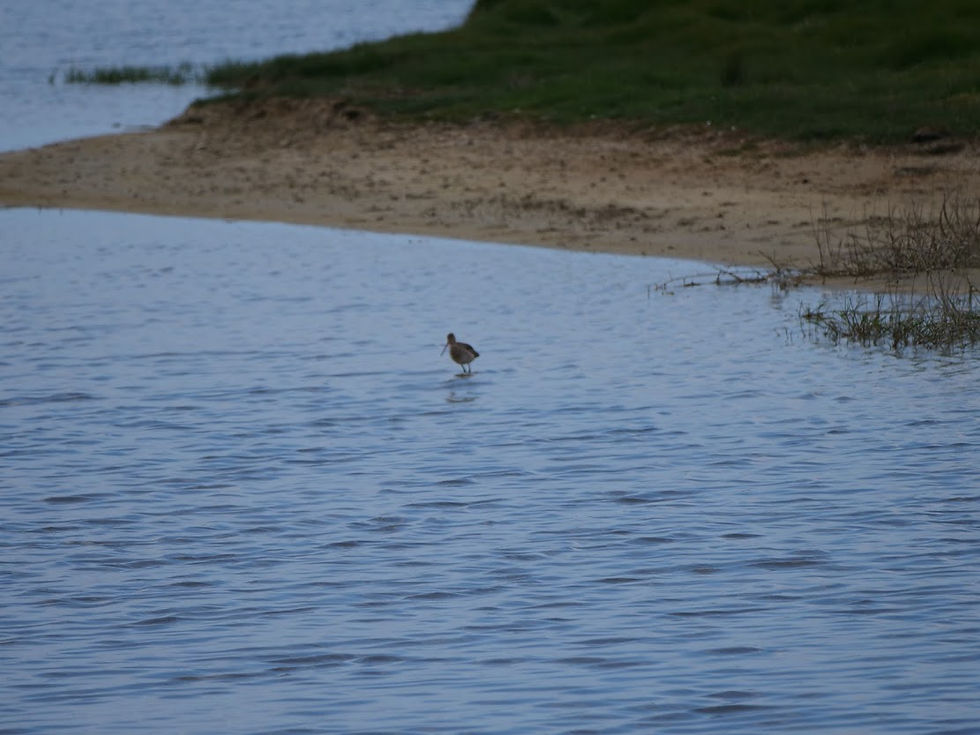
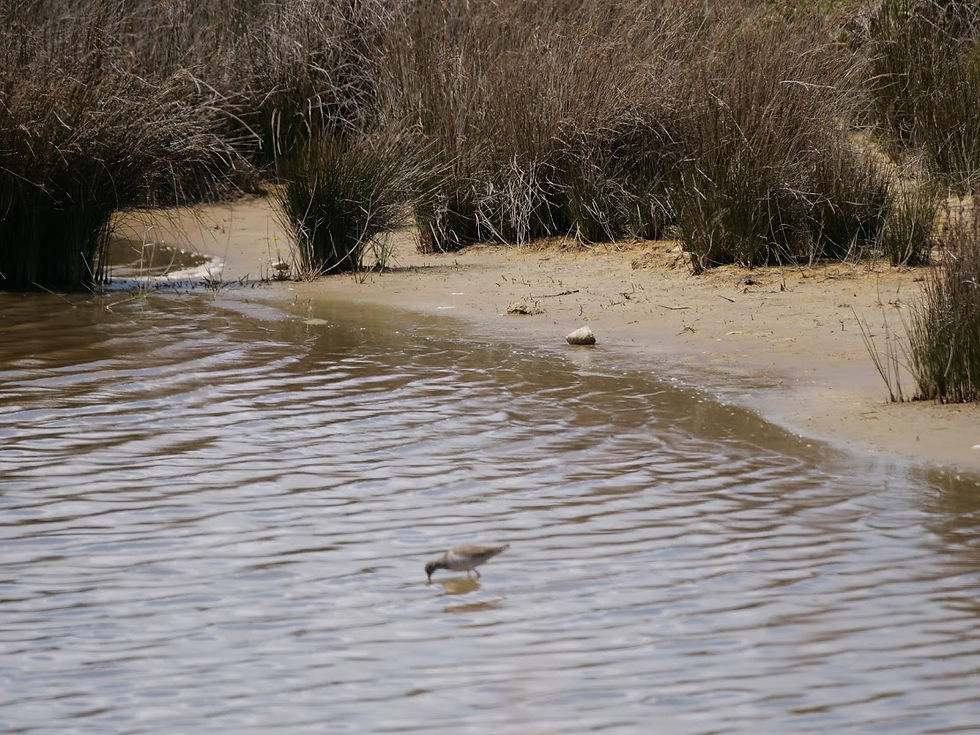
Cattle Egret Bubulcus ibis
This was almost the first thing we saw when we got off the bus from Chichester. It is a rare bird: the RSPB estimate of the UK wintering population is ca.100. I wondered whther it was vagrant European bird, or possibly one a of a pair breeding, as it's in summer plumage? The first first ever pair to breed successfully in the UK was in 2007/2008 - in Somerset. I contacted RSPB Pagham Harbour about this spot, and recorded it on the British Ornithology Society's BirdTrack. This is what RSPB Pagham Harbour replied:

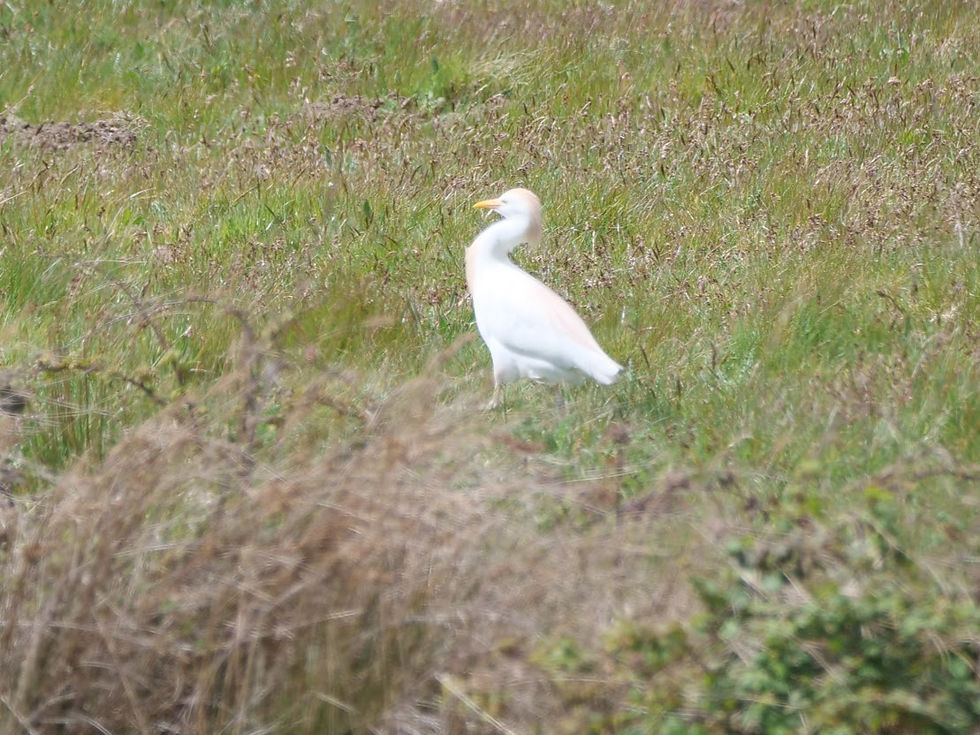
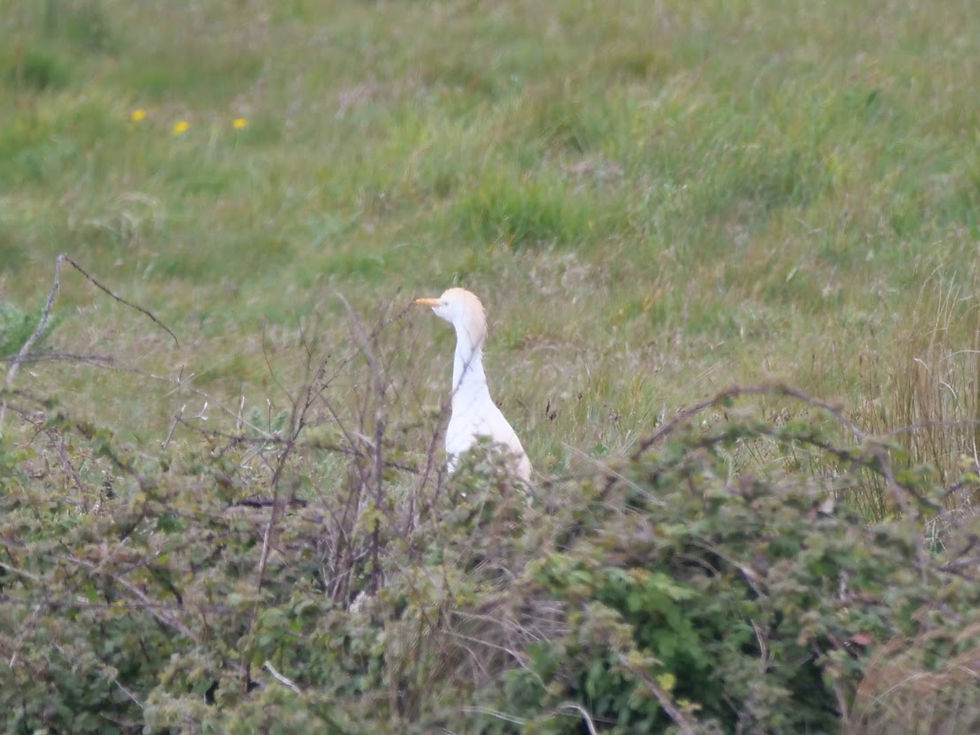
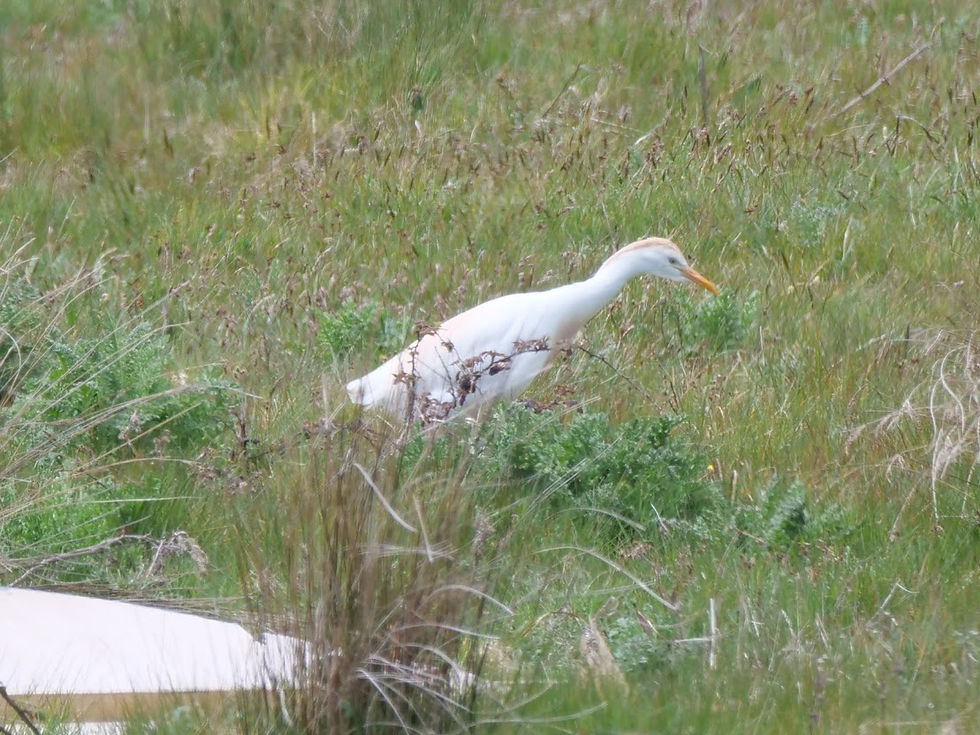
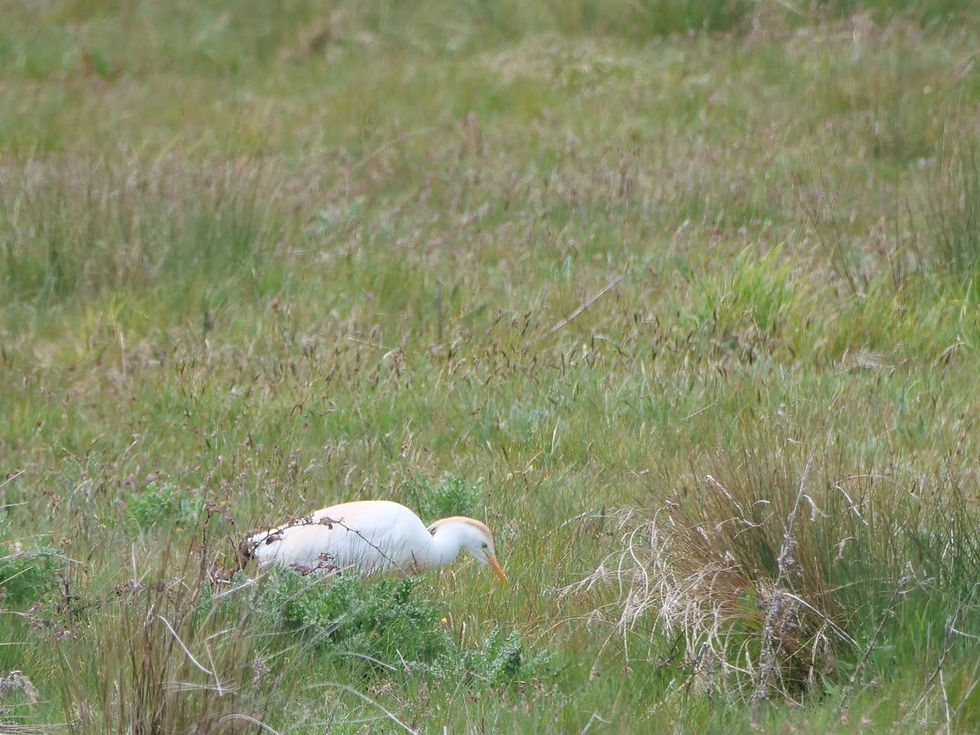
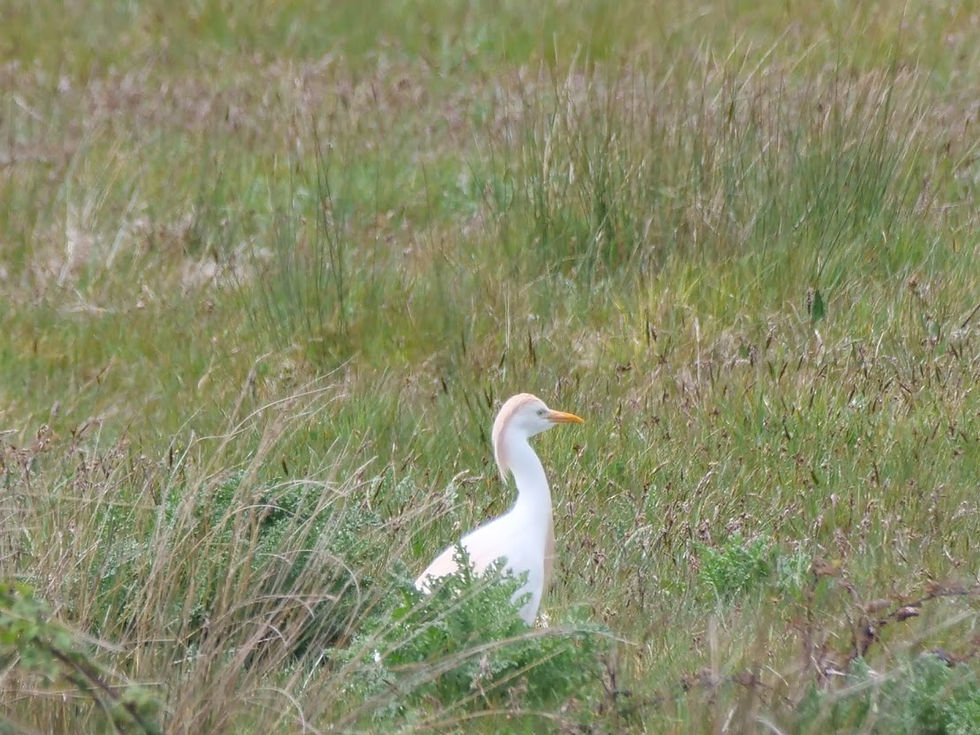
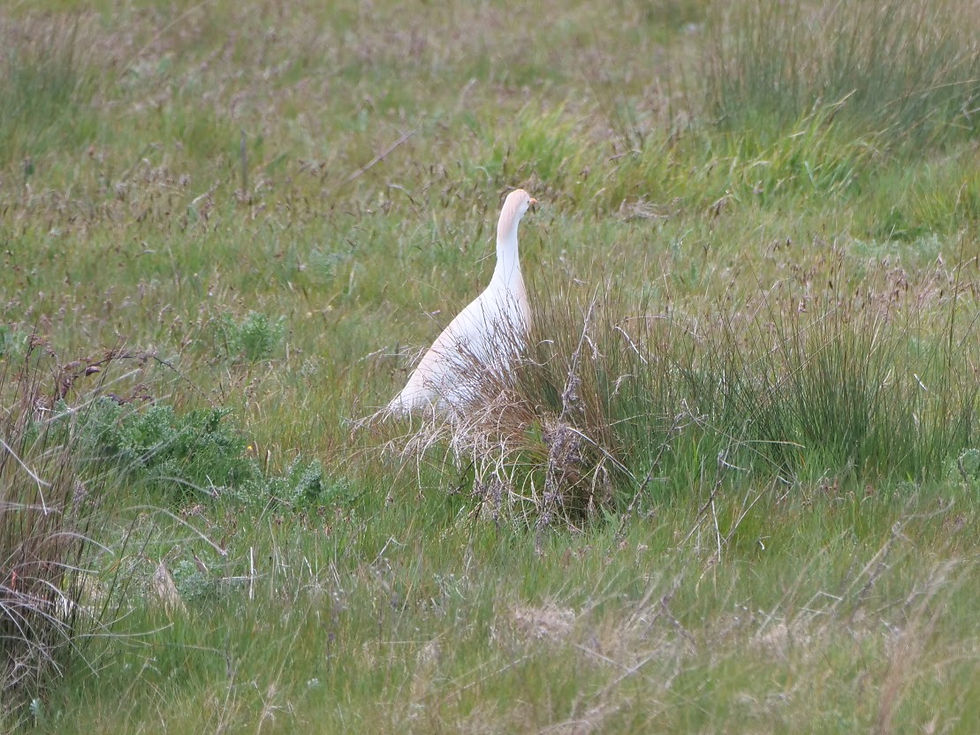
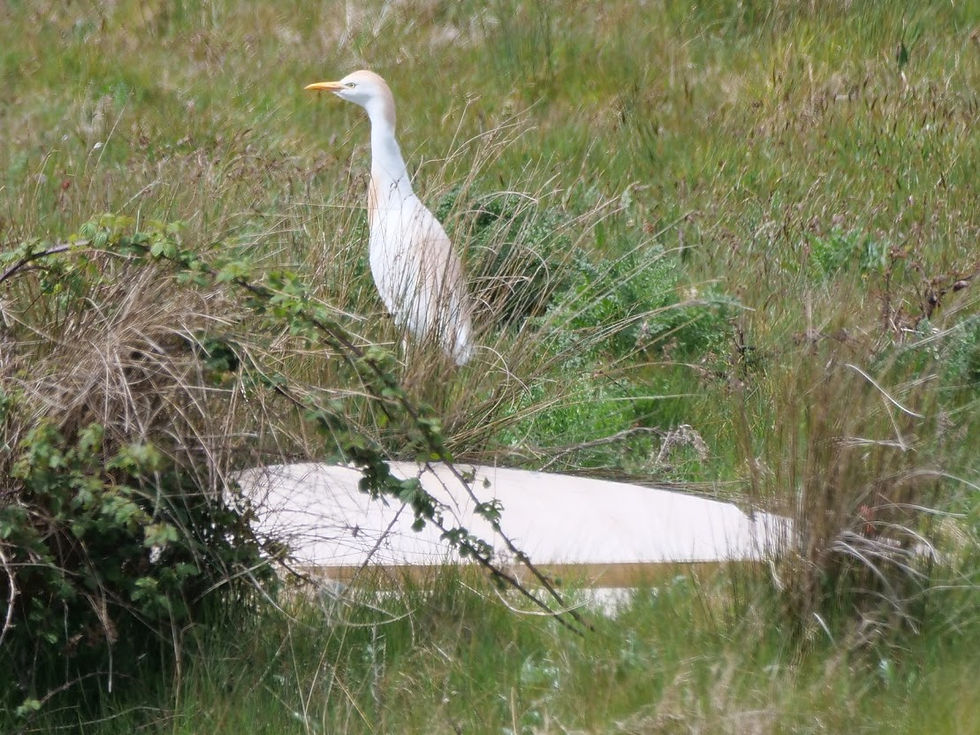
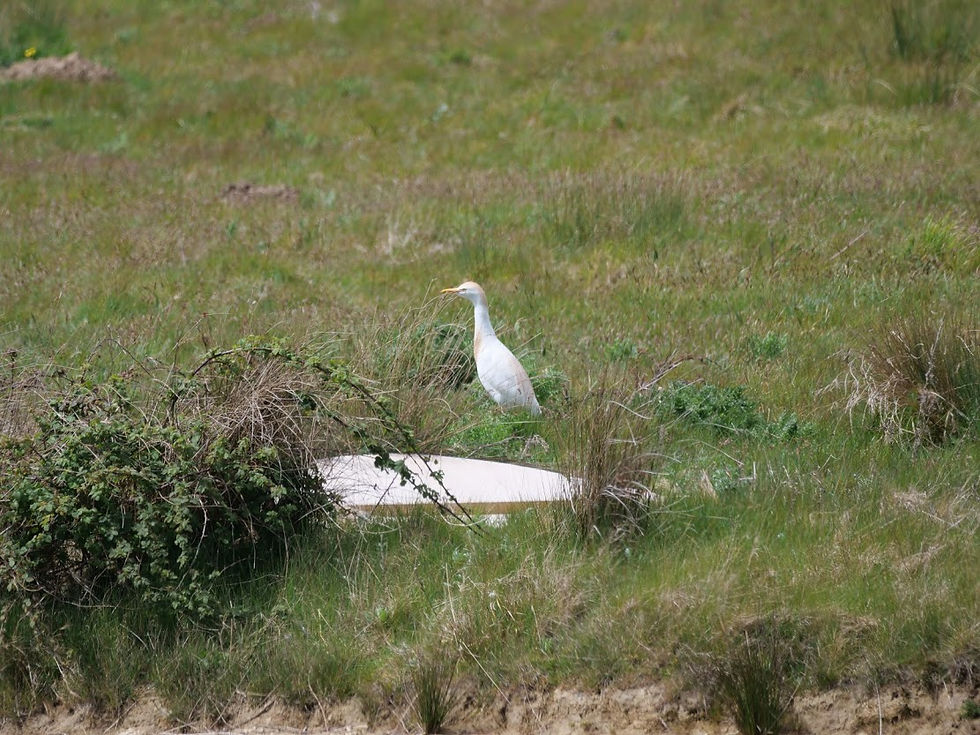
Western Cattle Egret nests in three new counties
Western Cattle Egret has bred in three counties for the first time this year, as the species' seemingly inevitable – yet somewhat drawn out – colonisation continues. Nesting birds have been confirmed in Essex, Hampshire and Northamptonshire for the first time, with the species only previously breeding in Cheshire and Somerset.
The species has increased significantly during the past decade. In winter 2007/8, an influx numbering some 200 individuals resulted in at least two pairs breeding on the Somerset Levels in summer 2008. Another large influx occured in winter 2015/6 and, the following summer, at least one pair nested in Cheshire. Two of the young Western Cattle Egrets at Chigborough Lakes, Essex (Paul Chamberlain). Despite this, no nests were publicised last year (though it's thought some birds bred), perhaps symptomatic of a somewhat staccato colonisation that has stopped and started over the past decade, rather unlike that of Little Egret in the late 1990s. However, following another influx during the winter of 2018/19, Western Cattle Egret has spread into at least three new counties, suggesting the most successful breeding season ever for the species in the UK.
At Chigborough Lakes in Essex, a pair has raised four chicks that, on 8 July, looked set to fledge. In Hampshire, the anticipation of as many as seven nests at Langstone Mill Pond in Chichester/Langstone Harbour (a site of significance during the early days of Little Egret colonisation) was confirmed on 5 July.
It's likely that more breeding success will be confirmed in the coming weeks and months, and it seems plausible that, after an up-and-down decade since the first ever breeding in 2008, Western Cattle Egret may now be here to stay. Western Cattle Egret nests in three new counties - BirdGuides
Only days before our sighting of this Western Cattle Egret I had seen a post from a Filipino Facebook Birder friend; with a photo of an Eastern Cattle Egret; I didn't recognize it! it is interesting how the Eastern Cattle Egret Bubulcus ibis coromandus has different plumage colourations
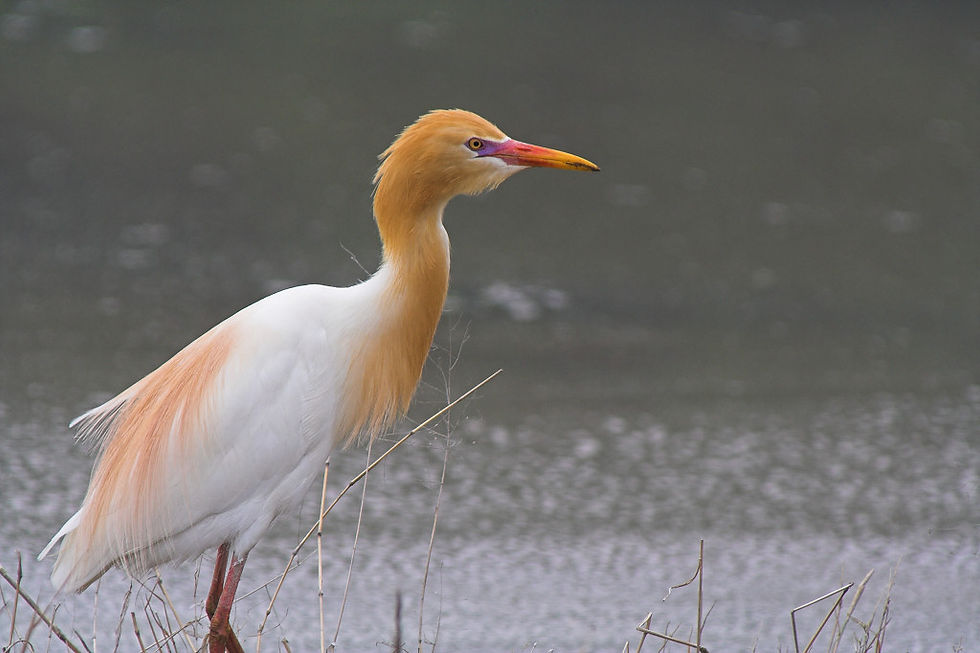
photo source: Eastern cattle egret - Wikipedia
Shelducks Tadorna tadorna and Avocets Recurvirostra avosetta
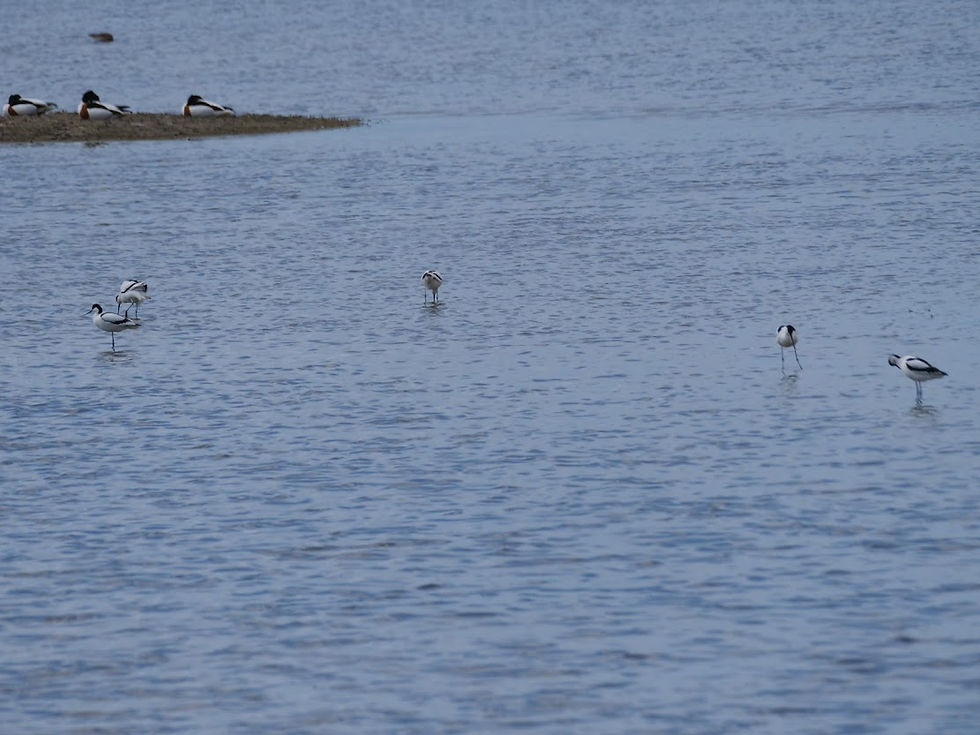
Medmerry RSBP Reserve
Kestrel (Windhover) Falco tinnunculus
We saw this Kestrel; hovering in the sky, as Windhovers do, along the path to Medmerry.
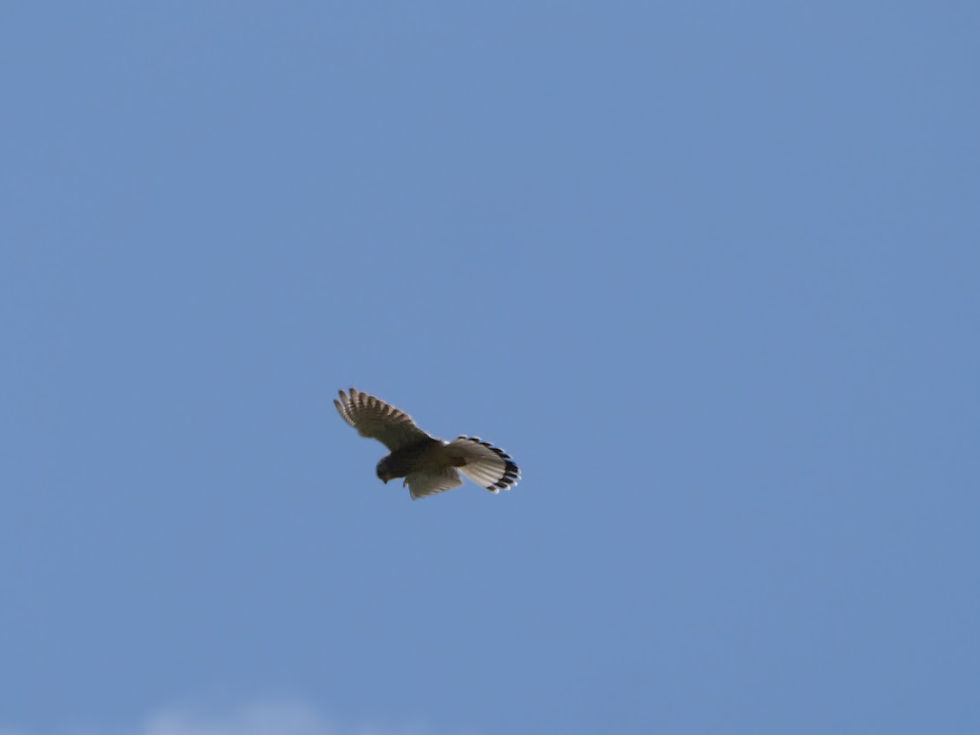
After seeing the Kestrel we met two other birders who said they had just seen a Yellowhammer; and further along the patch we saw it.
Yellowhammers, Emberiza citrinella (bunting family), are resident across the UK, but their numbers are in decline, and their UK conservation status is Red.
Known for its distinctive “a little bit of bread and no cheeeeeese” call, male yellowhammers have yellow heads and underparts, brown streaked backs and white outer tail feathers. Females are less bright with more steaks on the crown, breast and flanks while juveniles are duller and much less yellow that adults. Yellowhammer | Bird Identification Guide | Bird Spot
The UK yellowhammer population fell by 54 per cent between 1970 and 1998*. The main factor is low overwinter survival, probably because fewer seed food sources are available to them on farmland.
*Data source: British Trust for Ornithology
Key points
Maintain short, thick hedges and ditches with wide margins for nesting.
Flower-rich margins are better for insects than grass margins.
Do not trim hedgerows before September, as the late nests of yellowhammers are the most important for overall productivity.
Ensure there is at least one good seed food source throughout the winter. Yellowhammer Conservation | Advice For Farmers - The RSPB
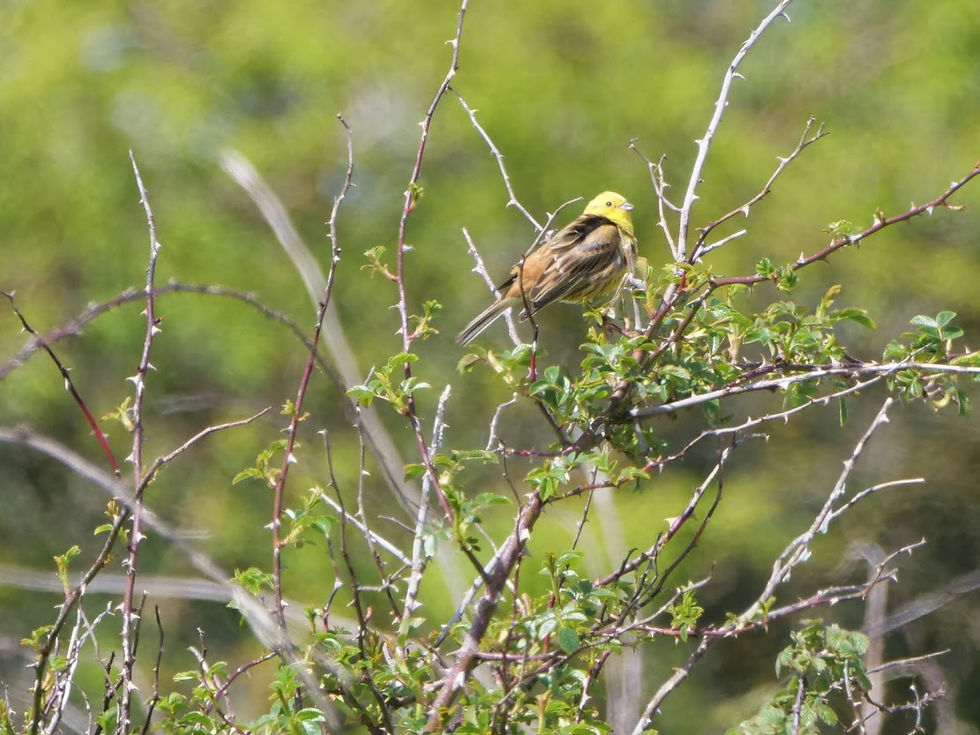
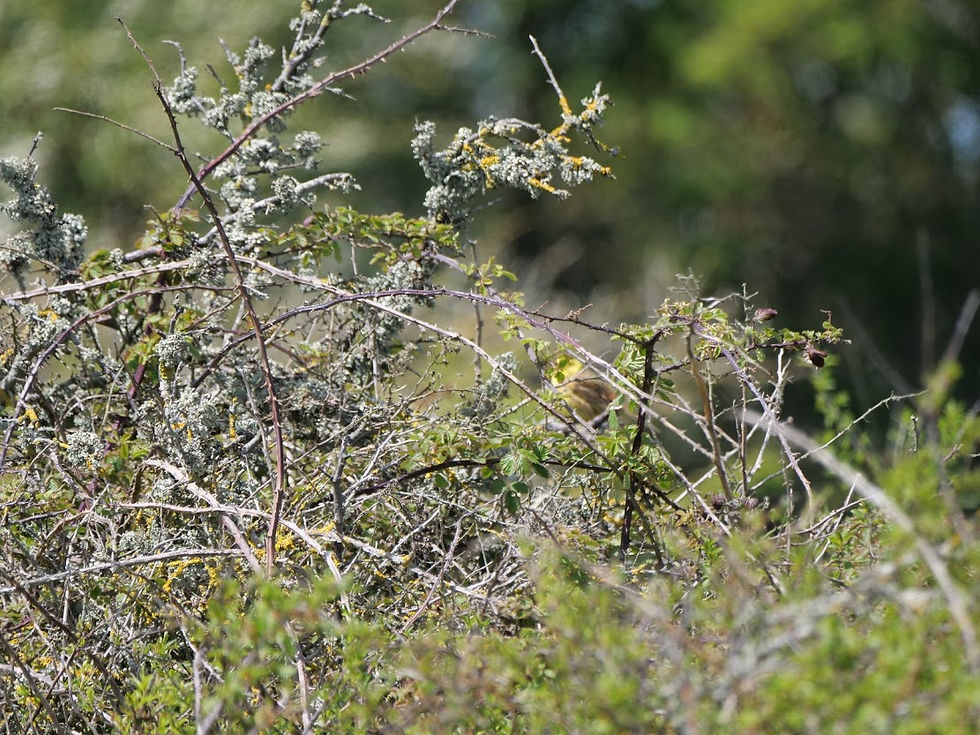
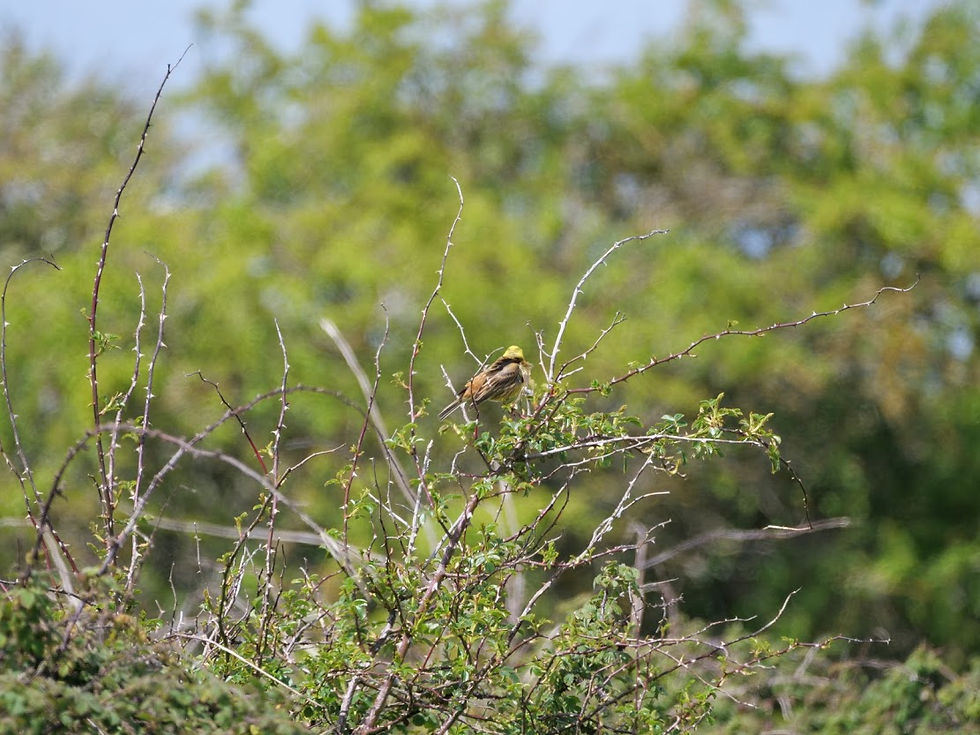
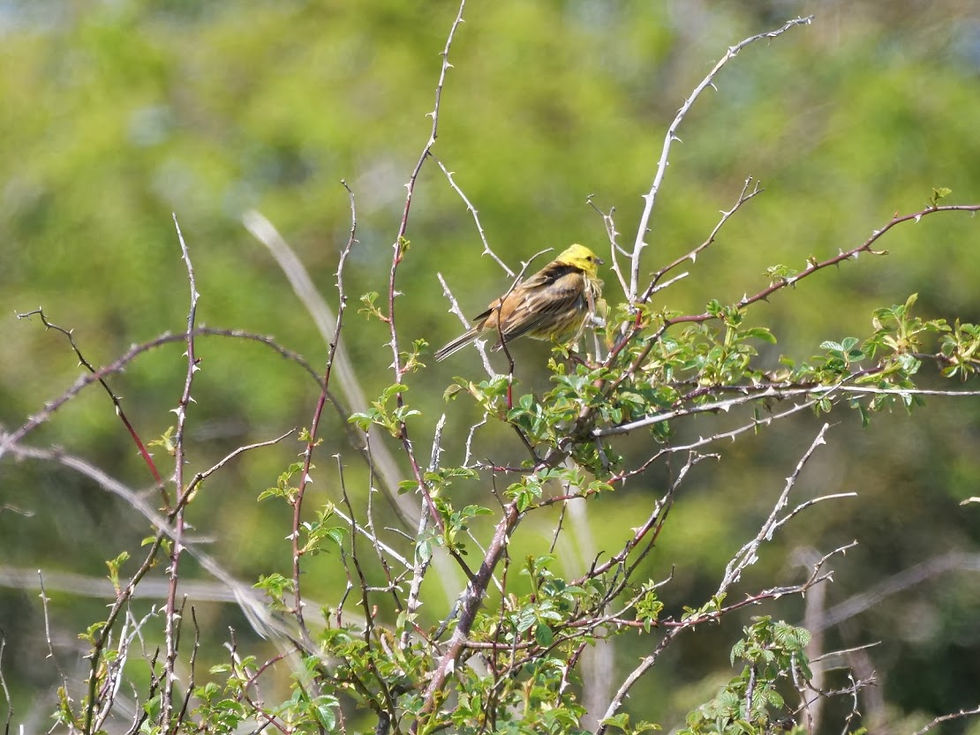
Whitethroat Curruca communis
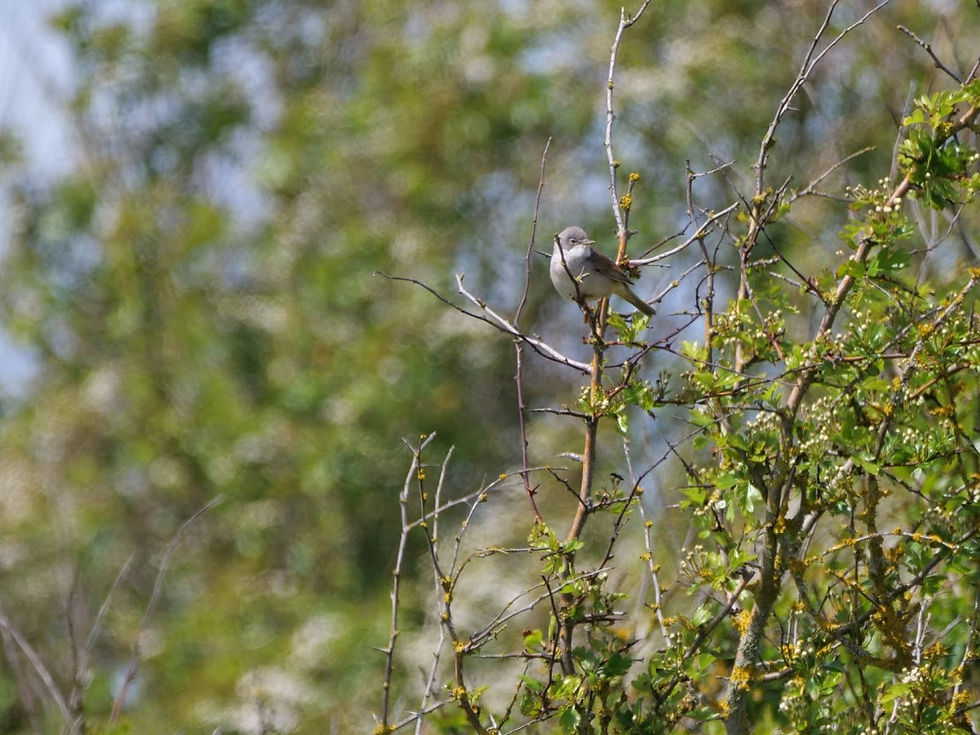
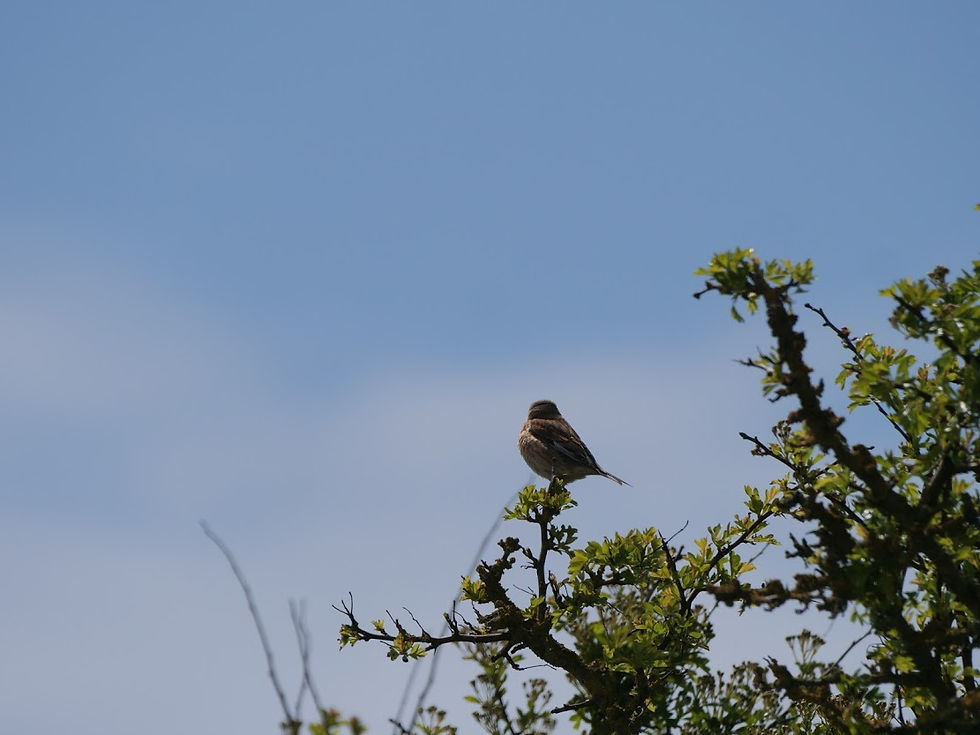
Barn Swallow Hirundo rustica
There were ca. 8 Swallows fling just above a pool, catching insects. Very briefly one of the Swallows sat on this wire. The photo is very blurred because I had to take it quickly before it flew off.
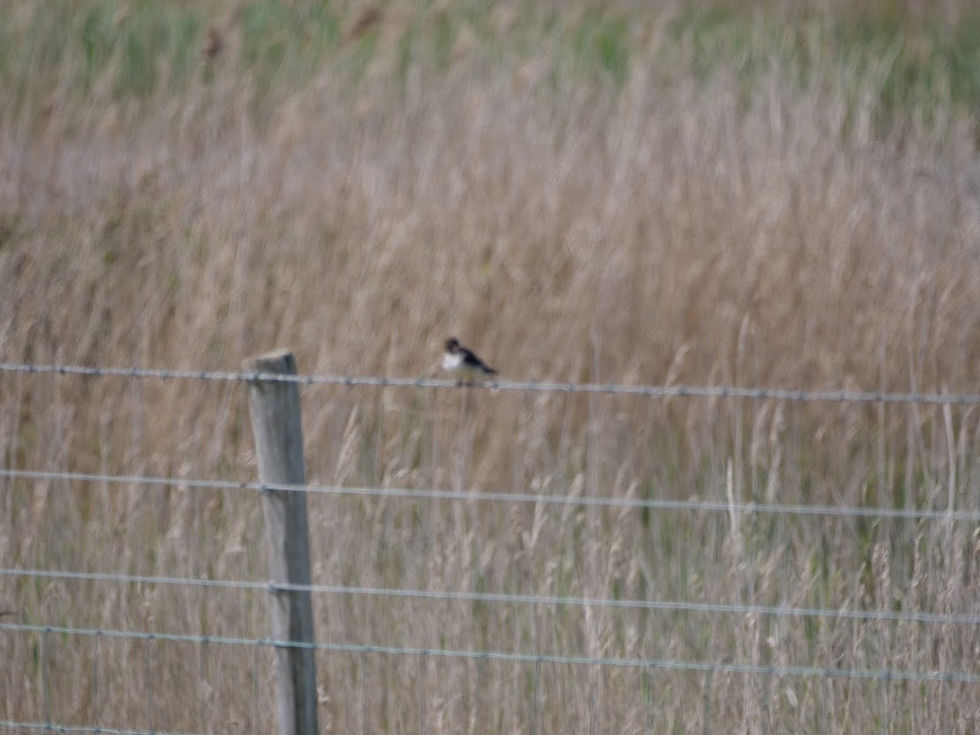
Stonechat Saxicola rubicola (female)
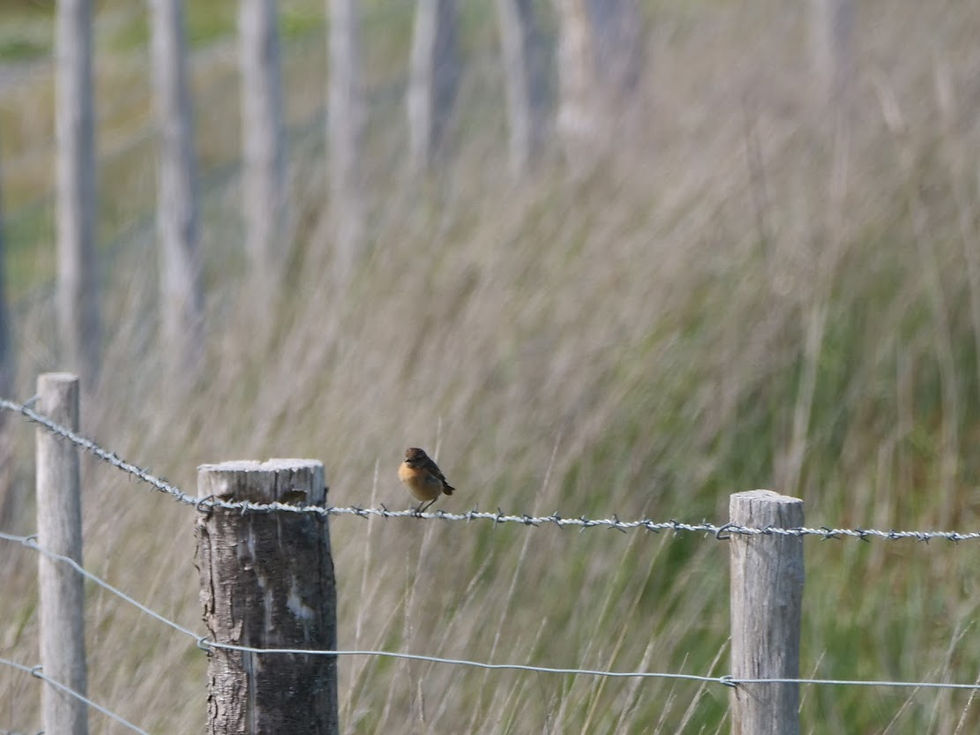
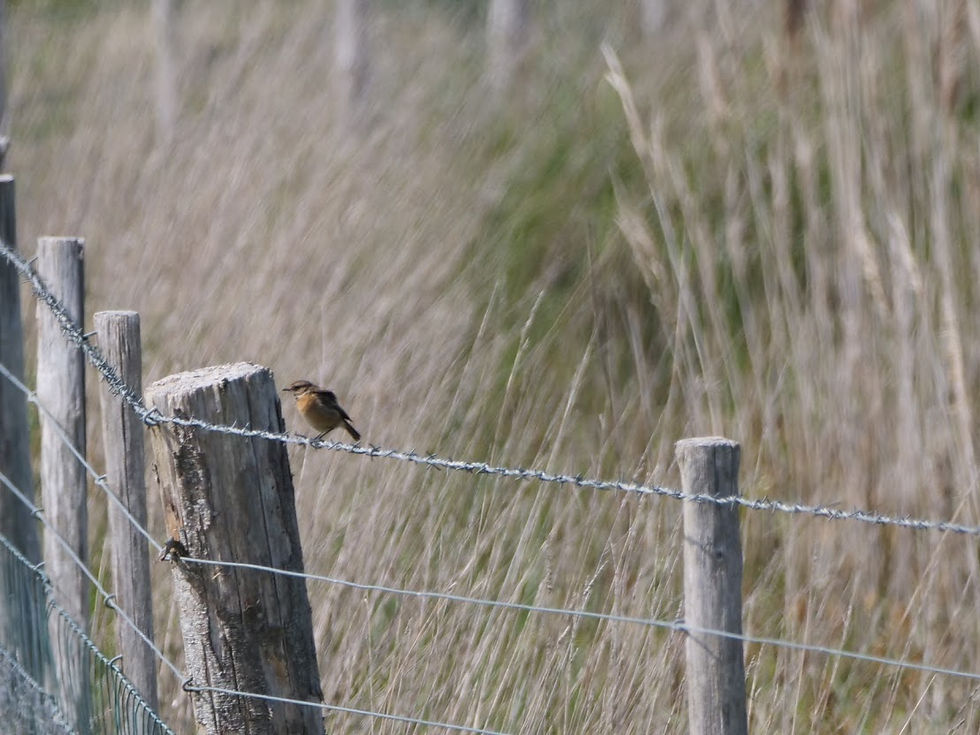
Flying Shelducks
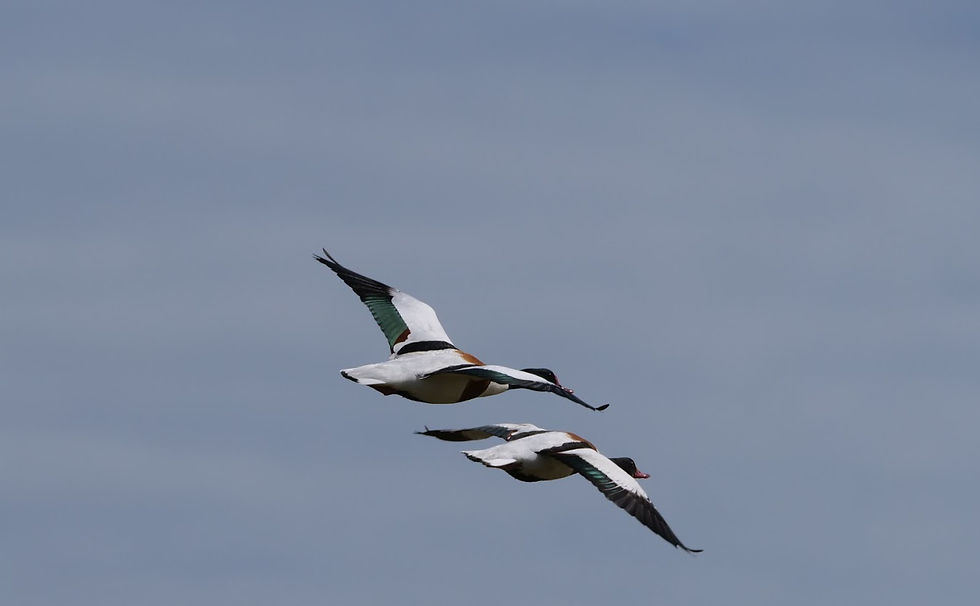
A Skylark Alauda arvensis, making a song flight.
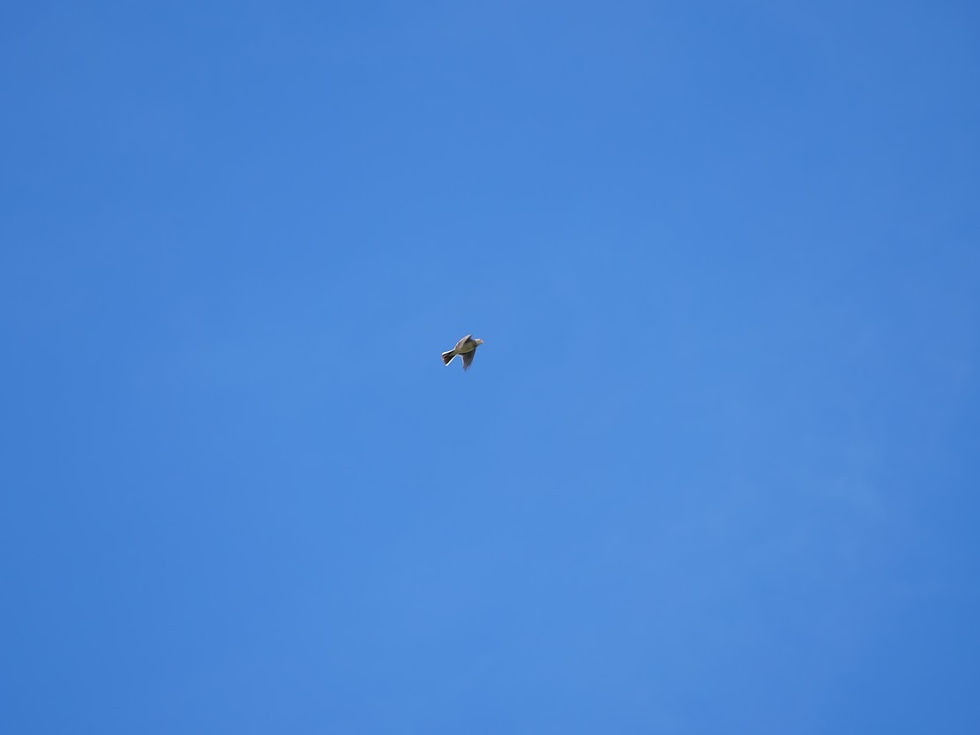
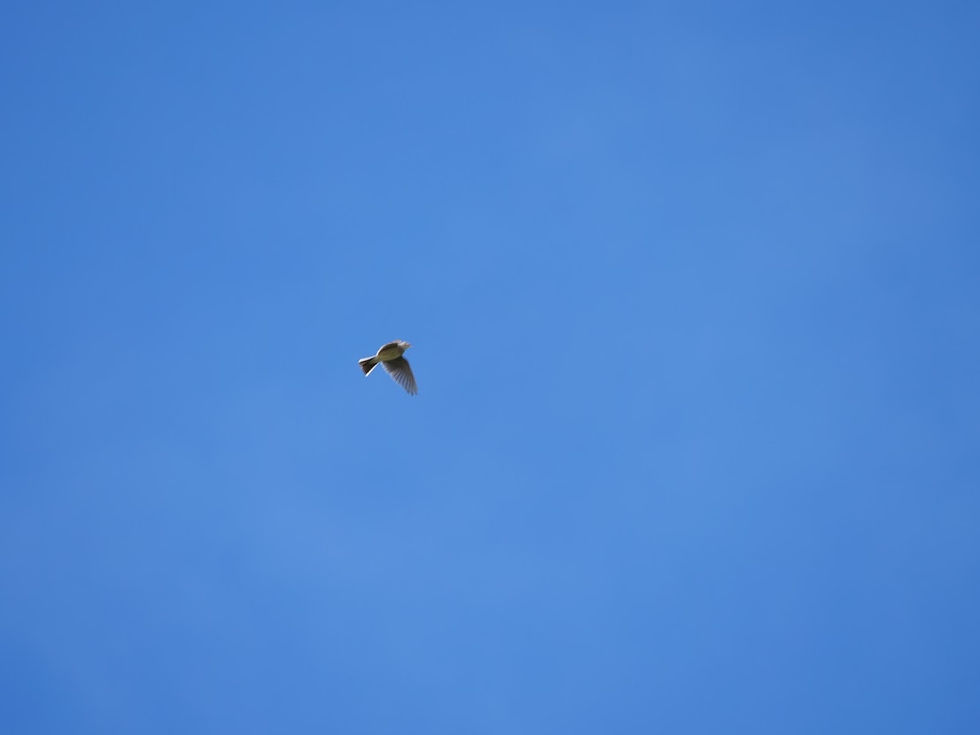
Cuckoo Cuculus canorus, We heard it distinctly; I have heard many Cuckoos but never seen one. We walked toward the group of trees that it was in; and saw two fellow birders with binoculars focussed on a tree; and there it was, as bold as brass, sitting in a tree cuckooing! It is another red conservation status bird in the UK bird and another new-to-me sighting.
It certainly seemed to be calling for a mate. The RSPB estimates that there are only 15,000 breeding pairs in the UK. If it's mate lays, she'll lay her egg probably in the nest of a meadow pipit, dunnock or reed warbler. Adults arrive in the UK in late March or April from sub-Saharan Africa, and depart in July or August, with young birds leaving a month or so later.
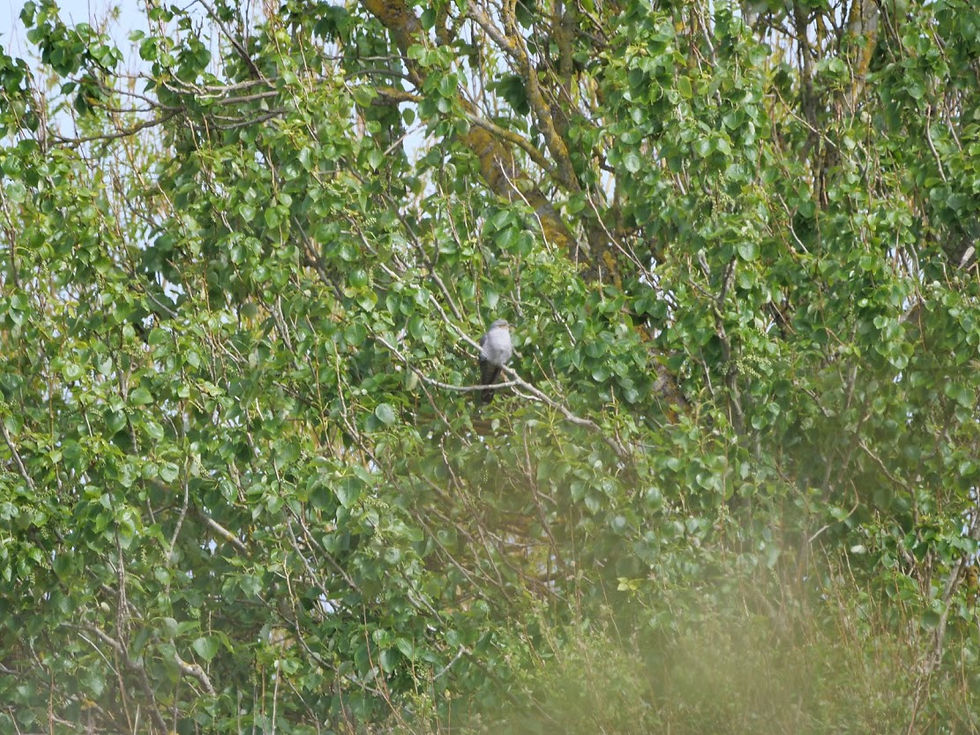
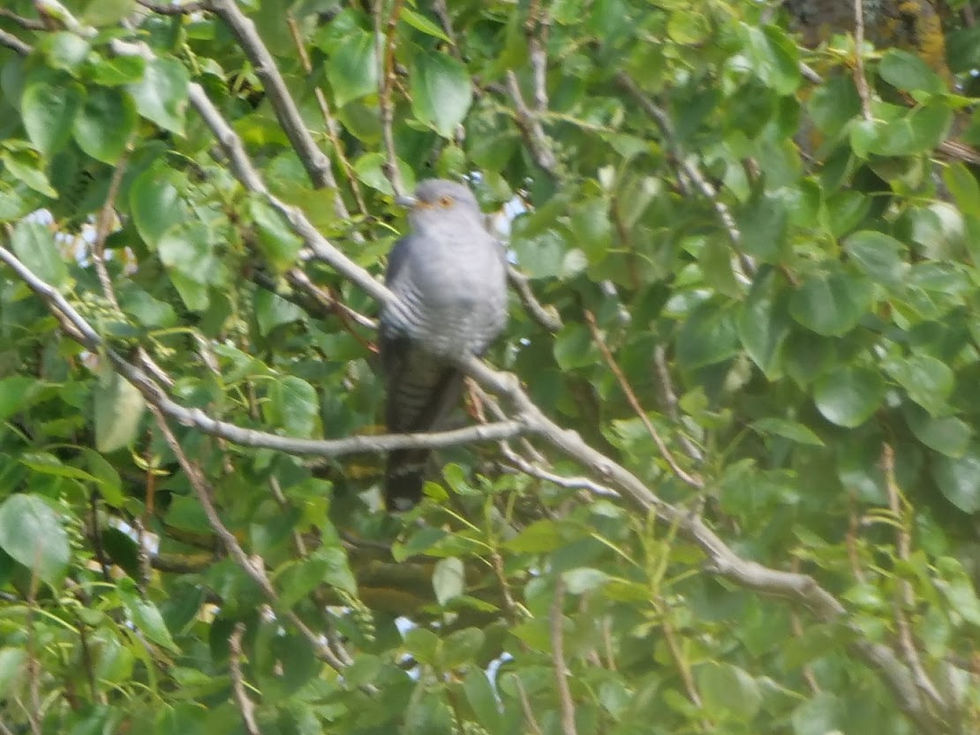
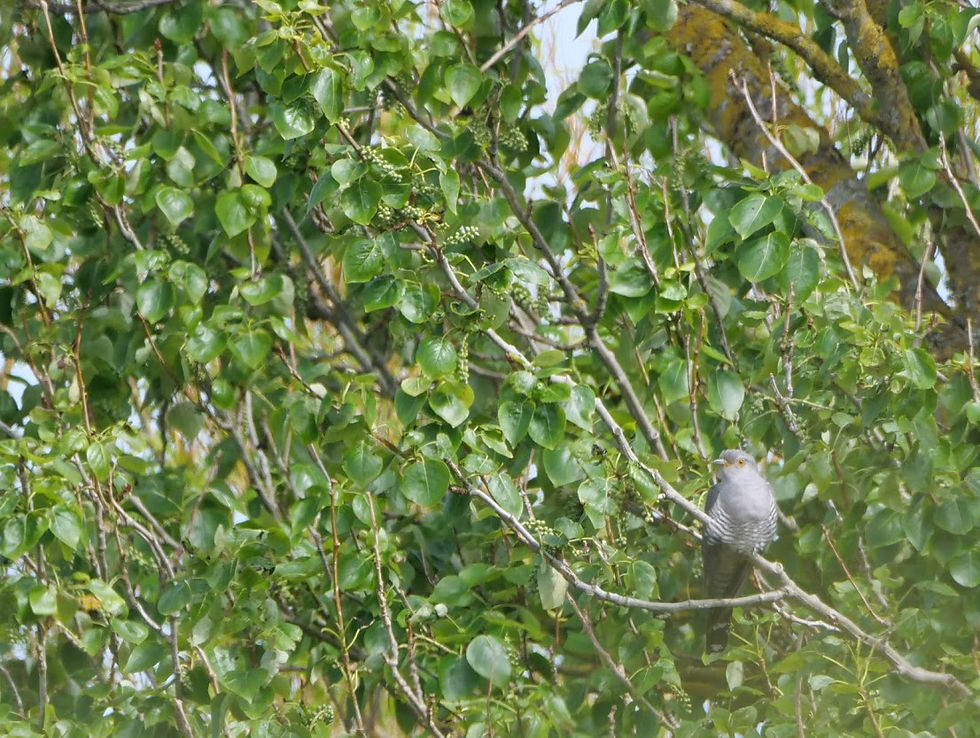



Comments